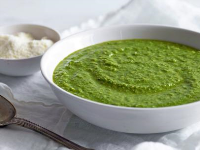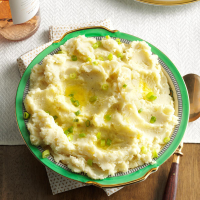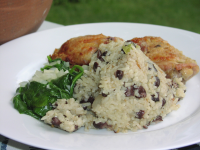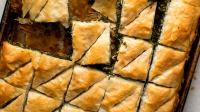COLD-PROVE PIZZA DOUGH RECIPE - OONI USA

Good things come to those who wait, and pizza dough is certainly no exception!Cold-proving or cold rising is a technique that slows down the fermentation process by placing the dough inside your fridge as it ferments, allowing the yeast to work on the sugars in the flour for a long period of time.A 24- to 72-hour prove time helps the dough to develop a complex structure, creating a deeper flavor and added texture. Shaping the dough into balls while they’re cold also prevents excess air from escaping, resulting in beautifully bubbly crusts when cooked. Although it requires a bit of forward planning, the technique itself is super simple, and the results are well worth the wait. Just mix the ingredients together, then pop the pizza dough in the fridge and let the yeast work its magic! This recipe is very similar to our Classic Pizza Dough, with simply the quantity of yeast adjusted for cold-proving.Makes 4 x 12” (30cm) pizzas (equivalent to 4x 250g dough balls), or 3x 16” (40cm) pizzas (equivalent to 3 x 330g dough balls)Preparation: 29 h 40 min
Provided by Federica Scanavini
Total Time 29 hours 41 minutes
Prep Time 29 hours 40 minutes
Cook Time 1 minutes
Yield 4
Number Of Ingredients 4
Steps:
- Prepare the pizza doughPlace two-thirds of the water in a large bowl. In a saucepan or microwave, bring the other third of water to boil, then add it to the cold water in the bowl. This creates the correct temperature for activating yeast. Whisk the salt and yeast into the warm water.
- Mixing and kneading - by handPlace the flour in a large bowl and pour the yeast mixture into it. Stir with a wooden spoon until a dough starts to form. Continue mixing by hand until the dough comes together in a ball. Turn it onto a lightly floured surface and knead with both hands for about 10 minutes, until it is firm and stretchy. Return the dough to the bowl. Cover with plastic wrap (cling film).
- Mixing and kneading - using a mixerFit the mixer with the dough hook and place the flour in the mixer bowl. Turn the machine on at a low speed and gradually add the yeast mixture to the flour. Once combined, leave the dough to keep mixing to at the same speed for 5-10 minutes, or until the dough is firm and stretchy.Cover the mixing bowl with plastic wrap (cling film).
- Cold prove the pizza doughPlace the covered pizza dough in the fridge to cold prove for 24 to 72 hours. When the dough has roughly doubled in size, remove the dough from the fridge.
- Second proveDivide the cold-proved pizza dough into 3 or 5 equal pieces, depending on what size you want your pizzas to be (either 12 inches or 16 inches wide). Shape each piece into a ball, and place each pizza dough ball in a separate bowl or tray. Cover with cling film and leave to rise for 5 hours on your kitchen bench, so that they can come up to room temperature and double in size.
- Stretching the pizza doughOnce the second prove is complete, you’re ready to stretch out your pizza bases!Place the ball on a lightly floured surface, flour your hands and use your fingertips to press the dough into a small, flat disc. Working from the center, push the dough outwards while spreading your fingers, making the disc slightly bigger. Pick up the dough and gently pinch it all around the edge, allowing gravity to pull it downwards into a 12”/16” circle. Neapolitan-style pizza bases are very thin, so you should be able to see through the base when you hold it up to the light. Take care when doing this – you don’t want it to tear.Once the dough is fully stretched, lightly flour your pizza peel and lay the base on it. If at this point you see any small holes in the dough, gently pinch them back together. Once you’re happy with the base, add your toppings and bake in your Ooni pizza oven!
Nutrition Facts : ServingSize 4,
SOURDOUGH PIZZA DOUGH RECIPE - EASY - OONI UNITED KINGDOM

Master making sourdough pizza with this tried-and-tested method from Ooni Pizza Taste Tester Bryan Ford – a professional baker, pizza lover and Ooni user, and author of the baking blog Artisan Bryan (find him on Instagram as @artisanbryan). This recipe uses a combination of “00” and whole grain flours for pizza bases with good structure and depth of flavour.What is sourdough?Sourdough is a traditional method of making dough that uses a natural starter, or mother, to ferment any kind of dough, rather than using commercial, ready-made yeast that comes from a packet. It means the dough takes longer to prove and develop, and you get a great depth of flavour in your doughs. You can use the method for making anything from bread to pizza to croissants.Maintaining your sourdough starterNo matter what kind of dough you’re making – whether it’s for pizza or otherwise – a key part of prepping sourdough-based recipes is maintaining your sourdough starter.Keep your starter in a jar on your kitchen countertop, covered with a lid or a cloth with an elastic band wrapped around the opening. If you’re using your starter regularly to make dough, it’s best to feed it with water and flour every 1-2 days to keep it alive and active, so it’s ready to use anytime. To feed it, add equal parts flour (the same flour your starter is based on) and water to the starter and mix until fully incorporated. The starter will grow every time you do this, so each time you’ll need to remove a little bit of the starter before adding the fresh flour and water.If you need to leave your starter at home for a while or are unable to feed it for a period of time, seal it and place it in the fridge for up to 2 weeks. The cold temperature will make the starter go dormant, so it doesn’t need to be fed during that time. When you’re ready to use it again, continue feeding it every 1-2 days as normal.Making sourdough pizzaMakes 4 x 12” pizzas
Provided by Federica Scanavini
Total Time 33 hours 1 minutes
Prep Time 33 hours
Cook Time 1 minutes
Yield 4
Number Of Ingredients 11
Steps:
- Note that you’ll need to start in advance, preparing this recipe by the morning of the day before you want to cook pizza. You’ll also need to have your active, mature sourdough starter ready to go – it’s mature when you’ve been feeding it regularly in the days leading up to starting this recipe.
- Build the levain mixTo make the levain mix, take a tall jar and combine the 50g of sourdough starter with the flour and water. Mix until fully incorporated. Cover and leave to sit at room temperature for 3-4 hours, or until doubled in size. A nice trick is to put a rubber band around the jar where the line of the levain is when you mix it, so you can check how much it’s growing and be sure that’s doubled.
- Build the final mixOnce the levain mix is ready, it’s time to make the final mix. In a large bowl, dissolve the salt into the water. Stir it until it’s completely dissolved. Add the 200 grams of levain mix, and stir until dissolved. Slowly add the flours, and mix together using your hands. The key is to incorporate the flour slowly so that the dough hydrates fully. Leave to rest on your kitchen countertop uncovered for 10 minutes before beginning the initial kneading.
- Knead the pizza doughOnce rested, dust your work surface with flour and begin to knead the dough. If kneading by hand, use the palm of your hand and push the dough in a forward motion to the point that it is almost tearing. Pull the dough back onto itself, rotate it, and push with your palm again. This will take around 10-15 minutes. Alternatively, you can also knead the dough using a stand mixer – mix the dough on low speed for 10-15 minutes, then at a higher speed for 5-10 minutes. The dough is finished kneading when it’s smooth, bouncy and its shape bounces back after pressing into the dough with your fingers – this means the gluten structure has developed and the dough is giving some resistance. You should be able to squeeze it and pull it without any tearing.On your work surface, tighten up the dough by tucking the edge of your hand under the dough and pulling it towards you, moving your way around the edge of the dough to keep tucking the edges underneath. This will help to smooth out the surface of the dough and ensure an even fermentation.
- Bulk ferment the doughAdd a little olive oil to a large bowl or tub, spreading it around using your fingers to coat the container. Place the dough inside and cover with a cloth or the lid, and leave to bulk ferment at room temperature on your kitchen countertop for 3 hours. The dough is finished bulk fermenting when it’s at least doubled in size and has lots of air bubbles appearing under the surface.
- Divide & ball up the pizza doughPortion the dough into 3 or 4 equal pieces, depending on the size of your pizza. Shape each piece of dough into a ball using the same technique as tightening up the bulk dough – place the dough piece on the countertop and pull it towards you from the edge furthest away from you, tucking the edge of your hand under the dough. Keep doing this around the edge of the and pulling it towards you, moving your way around the edge of the dough piece until it’s smooth and round.Once shaped, dust a proving tray with flour or line a baking tray with parchment (baking) paper, and place the pizza dough balls on the tray. Cover with a cloth or the tray’s lid and place inside the fridge to cold prove overnight for 24 hours.
- Stretch, top & cook your pizzas!Once the cold prove has finished, bring the pizza dough balls back up to room temperature by removing them from the fridge and leaving the tray on your kitchen countertop for around 2 hours. It’s important they’re at room temperature before you start stretching the pizza dough, or it will be too tight and impossible to stretch.Once they’re ready to go, stretch, top and cook your pizzas! Check out all our pizza recipes for a huge range of topping ideas.To cook the pizza, fire up your Ooni pizza oven, and aim for 500˚C (932˚F) on the stone baking board inside.Using a small amount of flour, dust your Ooni pizza peel. Stretch the pizza dough ball out to 12”/16” and lay it out on your pizza peel. Top as desired, then slide the pizza off the peel and into your Ooni pizza oven, making sure to rotate the pizza regularly. Serve and enjoy!
Nutrition Facts : ServingSize 4,
More about "dough fermentation recipes"
SWEET MOCHI WITH RED BEAN FILLING RECIPE - NYT COOKING
Nothing compares to the texture of fresh mochi, the sweet, delightfully chewy Japanese rice dough. And when you make it yourself (which takes about 10 minutes), you can really enjoy it fresh, at the peak of its textural pleasures. Chop up the cooled mochi and toss it in roasted soybean flour, and it's ready to go as a sweet snack or ice cream topping. Or, as in this recipe, put in some extra time and wrap the sticky dough around a simple red bean filling to make daifuku. The pastry chef Tomoko Kato uses shiratamako flour processed in Japan, but mochiko flour can be easier to find, and the results are similar.
From cooking.nytimes.com
Reviews 4
Total Time 3 hours
Cuisine japanese
Calories 88 per serving
From cooking.nytimes.com
Reviews 4
Total Time 3 hours
Cuisine japanese
Calories 88 per serving
- Using a starch-dusted knife, cut the dough into 20 even pieces. (If eating plain, or as an ice cream topping, cut into 40 to 50 smaller pieces.) One at a time, use a rolling pin to roll a piece of mochi dough into a thick, flat disk about 2 inches by 2 inches. Use potato starch liberally to keep the dough from sticking to your work surface, the rolling pin or your fingers. Roll a scant tablespoon of bean paste between your hands to form a ball and place it in the center of the rolled-out dough piece. Use your fingers to evenly stretch the mochi dough up and around the filling without squishing it, pinching the dough shut at the top to seal it, and then gently rolling the mochi between your hands to form a rounded shape. Set on the parchment-lined baking sheet with the seam on the bottom. Eat the filled mochi the day they’re made, or cover and store in the refrigerator for 1 day.
See details
SOURDOUGH RECIPE - BBC FOOD
To make this bread you need to use a ‘starter’ mixture that takes the place of yeast. The starter takes about 5 days to develop (or you can buy it online), but once you have it you can keep it alive and use it whenever needed.
From bbc.co.uk
Reviews 4.4
From bbc.co.uk
Reviews 4.4
- Preheat the oven to 230C/210C Fan/Gas 8. Put a few ice cubes or cold water into a baking tin and place in the bottom of the oven to create steam. Turn the loaves out onto a baking tray or hot baking stone. Using a thin sharp knife score two or three times on the top of the loaf and place in the oven. Bake for 35–40 minutes or until a good crust has formed and the loaves sound hollow when tapped on the base.
See details
HOW TO PROOF BREAD AND FERMENTATION BASICS - THE SPR…
Jun 23, 2020 · Fermentation . Proofing refers to the specific rest period or amount of time that fermentation occurs. Fermentation is the necessary step in creating yeast bread and baked goods where the yeast is allowed to leaven via fermentation causing the dough to rise. The alcohol produced by the yeast during fermentation…
From thespruceeats.com
From thespruceeats.com
See details
THE PIZZA LAB: HOW LONG SHOULD I LET MY DOUGH COLD FE…
Oct 10, 2019 · The warmer the dough is during fermentation, the faster the yeast multiply and produce carbon dioxide (carbon dioxide production rate maxes out at around 90°F). So with very simple recipes, this entire process can take place in just a few hours. But experienced bakers and pizza-makers know that this is not the best way to make dough.
From seriouseats.com
From seriouseats.com
See details
WHAT TO KNOW ABOUT RETARDING BREAD DOUGH - THE SPRUCE EATS
May 14, 2020 · The full process of making bread can eat away at your day: you have to mix the dough, wait for the first rise (or bulk fermentation), shape the dough, wait for it to rise again, then bake it. A …
From thespruceeats.com
From thespruceeats.com
See details
THE IMPORTANCE OF DOUGH TEMPERATURE IN BAKING | THE ...
Dec 09, 2017 · When I have dough in bulk fermentation inside the proofer, I set it to the formula's DDT exactly. As I said before, this typically is between 75°F (24°C) and 80°F (26°C). I also like to keep an eye on my dough …
From theperfectloaf.com
From theperfectloaf.com
See details
PIZZA DOUGH - THE BEST PIZZA CRUST ... - NATASHASKITCHEN.COM
Apr 24, 2020 · Since most pizza dough recipes have the same ingredients: flour, salt, water, yeast, it’s the process that makes all the difference. This pizza dough seriously tastes like it came out …
From natashaskitchen.com
From natashaskitchen.com
See details
SOURDOUGH - WIKIPEDIA
Sourdough fermentation has re-emerged as a major fermentation process in bread production in the past ten years although it is commonly used in conjunction with baker's yeast as leavening agent. [9] French bakers brought sourdough …
From en.m.wikipedia.org
From en.m.wikipedia.org
See details
THE BEST COLD FERMENTED PIZZA DOUGH RECIPE
2. Rising the Dough – Bulk Fermentation. Before we can cold ferment the dough, we need to leave it to rise in a bowl covered with a damp towel or plastic wrap for 2 hours. This is called bulk fermentation because you let the whole dough rise. Bulk fermentation gets the yeast going, and gives the dough a good start for the cold fermentation.
From thepizzaheaven.com
From thepizzaheaven.com
See details
WHAT HYDRATION LEVEL SHOULD PIZZA DOUGH BE? – PIZZA DOUG…
in Dough Fermentation,Italian Pizza,Pizza Dough Recipes,Pizza Making Tips There are so many pizza recipes out there online and so few of them discuss hydration levels. Maybe that’s the reason why I receive so many questions asking me how hydration relates to pizza dough …
From myhouseofpizza.com
From myhouseofpizza.com
See details
LONG-FERMENTATION SOURDOUGH BREAD RECIPE | ALLRECIPES
Step # 2 wasn't possible as the dough was more like a thin batter so I decided to treat it as a no knead and let it sit overnight, about 13 hours. For step three I used a bench scraper until there was enough flour added to work the dough, I then kneaded the dough …
From allrecipes.com
From allrecipes.com
See details
HOW DO YOU KNOW WHEN BULK FERMENTATION ... - THE PANTRY …
Nov 19, 2020 · Bulk Fermentation refers to the time after you complete gluten development (generally through stretching and folding the dough) until the time when you shape your dough. You leave the dough at room temperature to "ferment" in one bulk mass. Bulk fermentation …
From pantrymama.com
From pantrymama.com
See details
PIZZA DOUGH - THE BEST PIZZA CRUST ... - NATASHASKITCHEN.COM
Apr 24, 2020 · Gently press dough down in the center with fingertips then place the dough over the back of your knuckles with both hands together and roll over your knuckles rotating around the dough …
From natashaskitchen.com
From natashaskitchen.com
See details
SOURDOUGH - WIKIPEDIA
Sourdough fermentation has re-emerged as a major fermentation process in bread production in the past ten years although it is commonly used in conjunction with baker's yeast as leavening agent. ... The dough is shaped into loaves, left to rise, and then baked. A number of 'no knead' methods are available for sourdough …
From en.m.wikipedia.org
From en.m.wikipedia.org
See details
SOURDOUGH BREAD: NUTRIENTS, BENEFITS, AND RECIPE
Dec 20, 2021 · Sourdough is one of the oldest forms of grain fermentation.. Experts believe it originated in ancient Egypt around 1500 B.C. and remained the main method of leavening bread until …
From healthline.com
From healthline.com
See details
20 DIFFERENT TYPES OF DOUGH FOR ALL KINDS OF BAKED GOODS ...
Jun 19, 2020 · Sponge Dough Method. Sponge dough method involves creating a mixture of flour, water, and yeast, which is left to rise until it at least doubles in size. Then more flour, sugar, salt, and fat is added to the dough and kneaded. This method gives the bread a flakier texture with a slightly different flavor. Straight Dough …
From homestratosphere.com
From homestratosphere.com
See details
PIZZA DOUGH VS BREAD DOUGH: CAN THEY BE ... - CRUST KINGDOM
Fermentation. Both doughs have a bulk fermentation where the whole piece is allowed to rise before dividing. This adds flavor and pockets of gas from yeast fermentation. Pizza dough is then shaped in balls and allowed 1 more rise before shaping into a base. Bread dough …
From crustkingdom.com
From crustkingdom.com
See details
WHAT IS DOUGH PROVING (PROOFING) & HOW TO DO ... - LOA…
Proving which is also known as proofing is the process where the dough is rested to allow the yeast to ferment and produce gas bubbles which help the dough to rise. Most bread recipes will require the bread dough to rise twice, the first time after kneading and again after the dough …
From loafybread.com
From loafybread.com
See details
THE BEST COLD FERMENTED PIZZA DOUGH RECIPE
2. Rising the Dough – Bulk Fermentation. Before we can cold ferment the dough, we need to leave it to rise in a bowl covered with a damp towel or plastic wrap for 2 hours. This is called bulk fermentation because you let the whole dough rise. Bulk fermentation gets the yeast going, and gives the dough a good start for the cold fermentation.
From thepizzaheaven.com
From thepizzaheaven.com
See details
STOP PIZZA DOUGH SHRINKING WITH THESE 5 TIPS - CRUST KING…
It’s this network which can hold CO2 gas from the fermentation process, and allow the dough to rise when being proofed and baked. Think of the process like a bubble gum. An inactive hard gum …
From crustkingdom.com
From crustkingdom.com
See details
SOURDOUGH BREAD: NUTRIENTS, BENEFITS, AND RECIPE
Dec 20, 2021 · Sourdough is one of the oldest forms of grain fermentation.. Experts believe it originated in ancient Egypt around 1500 B.C. and remained the main method of leavening bread until …
From healthline.com
From healthline.com
See details
? CAN YOU MAKE A LOAF OF BREAD FROM PIZZA DOUGH? + MORE IDEAS
Pizza dough is one of the best doughs to use when you want to get creative. Whether you make your dough from scratch or buy it pre-made at the store, it can be used in recipes for your breakfast, lunch, or dinner. There are numerous recipes for you to take your pizza dough …
From breadopedia.com
From breadopedia.com
See details
20 DIFFERENT TYPES OF DOUGH FOR ALL KINDS OF BAKED GOODS ...
Jun 19, 2020 · Sponge Dough Method. Sponge dough method involves creating a mixture of flour, water, and yeast, which is left to rise until it at least doubles in size. Then more flour, sugar, salt, and fat is added to the dough and kneaded. This method gives the bread a flakier texture with a slightly different flavor. Straight Dough …
From homestratosphere.com
From homestratosphere.com
See details
PIZZA DOUGH PROPORTIONS, AUTOMATIC CALCULATOR - ALEX
Jul 12, 2015 · Update on refrigerating pizza dough: at 70% hydration, it was perfect after three days fermentation, still good and tasty after five days, and a bit tangy after seven days. So, to me, 3 …
From frenchguycooking.com
From frenchguycooking.com
See details
WHAT HYDRATION LEVEL SHOULD PIZZA DOUGH BE? – PIZZA DOUG…
in Dough Fermentation,Italian Pizza,Pizza Dough Recipes,Pizza Making Tips There are so many pizza recipes out there online and so few of them discuss hydration levels. Maybe that’s the reason why I receive so many questions asking me how hydration relates to pizza dough …
From myhouseofpizza.com
From myhouseofpizza.com
See details































